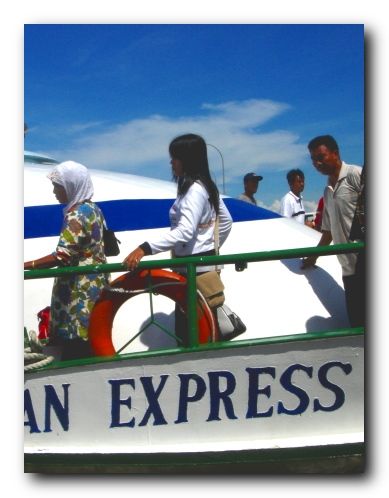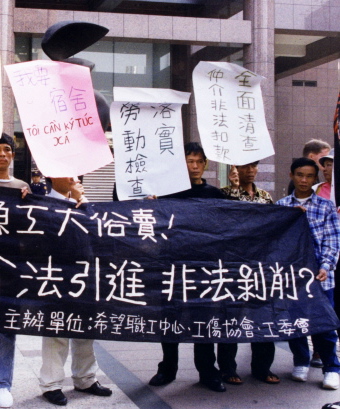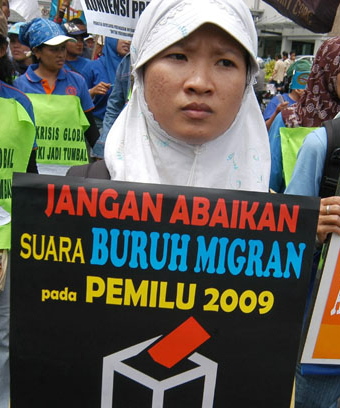In the coming April 2019 presidential election, 79 million, or 42 per cent, of Indonesian voters will be aged 17 to 35 according to recent data. This cohort also forms a part of the demographic bonus that Indonesia is predicted to enjoy in 2030 to 2040 when the working-age population (15 to 64 year olds) is greater than the non-working-age population. But the demographic bonus will not arrive automatically, nor will the young vote be delivered without effort. With only just over half of eligible young voters participating in the last election in 2014, there has been much headscratching over the political apathy of this generation. Indeed, very little has been said of why the current generation of Indonesian youth are not relishing the opportunity to participate in the democracy for which their predecessors fought.
As politicians scramble to capture the so-called millennial vote, much of the effort has focused on trying to out do the others at being millennial-like through social media and such. Yet, these flashy branding tactics only target a small, privileged segment of young voters. Most, as the articles in this edition show, are still struggling with basic needs such as access to education and jobs, while government policies tend to address symptoms rather than underlying structural issues despite efforts to do otherwise.
This edition aims to offer some insights into the views of young people in Indonesia through exploring how they see their current and future roles in society, their economic opportunities and their perceptions of the media, authority, diversity and tolerance.
This is the first generation of young adults born after the New Order. Whilst much is known about the role of youth before and during the fall of Suharto's New Order, we know little about the political views and the engagement of contemporary youth. Some scholarship has captured concurrent but opposing trends among the growing middle classes, such as westernisation and islamisation or individualism and an admiration for populist ideas, but many questions remain about what place this generation will earn within the national narrative.
The edition
Ariane Utomo, Iwu Utomo and Peter McDonald’s large, longitudinal study opens this edition by giving us a rare glimpse of the struggles that young people in Jakarta and its satellite cities go through as they transition into adulthood. The study follows a few thousand 20 to 35 year olds over eight years, documenting various aspects of their lives, including education, job search and married life, and their eating habits and sex life. One of its key takeaways is that a lack of educational pathways for young adults perpetuates the intergenerational cycle of poverty, which affects all other areas of their lives. More pertinently, those who are stuck in this cycle have been forgotten in the current public debate about millennials.
In his study of Flores, Fadhli Ilhami found young people’s choices for upward mobility are greatly limited by matters beyond their control. The lack of jobs in the villages, and a mismatch between educational programs and available jobs, force young people to use their peer networks to migrate out of their villages to look for work. But their low-levels of education and limited networks means that life in the big cities is even harder than back home. Even when they migrate out for higher education, Jessica N Clendenning finds that Flores youths’ ability to make informed choices about a university and a degree is compromised by their limited information networks and the business-oriented model of private universities.
Meanwhile, Aprilia Ambarwati and Charina Chazali draw our attention to the young women of Flores and Java who want to become farmers. Some study agriculture at school but their gender holds them back as social perceptions, land inheritance customs and government programs for transferring agricultural knowledge focus on men. Even when they do have access to education, it does not always offer a pathway towards a better life for the rural poor.
For some, their search for work takes young people further afield on very risky journeys. According to Antje Missbach and Wayne Palmer, neither Indonesia nor Australia is doing justice for impoverished underage Indonesian workers that transport asylum seekers to Australia – both countries treating them as people smugglers rather than victims of trafficking.
One theme that runs through several of the articles above is the significant impact of young people’s heavy reliance on personal networks for information. This is despite the fact that, unlike their parents’ generation, young people now have ready access to 24/7 online information. Danau Tanu and Levriana Yustriani find that persistent reliance on personal networks occurs even among college students in urban areas as they try to separate news reports from hoaxes. Apart from disillusionment with the politicised and polarised media, the tendency to rely on personal sources of information is also driven by young people’s poor ability to critically consider the information found.
It would appear that for all the tech-saviness of today’s youth, or ‘anak zaman now’ as they are often called, their ready access to the internet has not made them anymore informed than before. But that depends on how online media are used. Rizanna Rosemary, Pradytia Pertiwi and Inri Denna argue, for example, that while government efforts to create a new online app to reach youth at risk of suicide failed, community groups have had more success using existing social media platforms, such as Facebook and Twitter. This is because the latter emphasises engagement and attempts to address the issues behind the social stigma attached to suicide rather than merely disseminating information and providing treatment for mental illness after the fact.
Highlighting the need to look below the surface in addressing issues that young people face is a common theme in this edition. Hoko Horii argues that policies designed to address child marriages overlooks the impact that social perceptions of sex before marriage has on the rates of such unions.
Erica Larson, on the other hand, shows that even in the absence of a curriculum capable of instilling religious tolerance beyond abstract words, young people can find their own ways to engage across difference while working within the boundaries set by adults.
Finally, Amrina R Wijaya puts forth why looking beneath the surface matters. While young people may hold views that do not fit neatly into the boxes constructed by society, she offers the voice of her peers to reveal the internal struggles that youth face when their voices are left unheard.
Instead of trying to mimic millennials to capture their vote, it may be worth listening to them first to capture their voices. As Indonesia’s economy grows, youth aspirations will also grow, and leaving swaths of them unheard will have both financial and political consequences.
Danau Tanu (@danautanu) is an honorary research fellow in the School of Social Sciences at the University of Western Australia, and the author of Growing Up in Transit: The Politics of Belonging at an International School .
Antje Mißbach (antje.missbach@monash.edu) is a lecturer in the School of Social Sciences at Monash University.
Dave Lumenta (dlumenta@gmail.com) is a lecturer in the Department of Anthropology, Faculty of Social and Political Science at the University of Indonesia.















